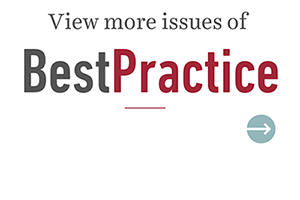By Chevonne DaSilvio-Nash, MBA, HCA
Project Manager, Temple Center for Population Health
During the rise of the Covid-19 pandemic, the increase in exposure and the urgency of being able to realign healthcare services to patients without forcing them to travel to a healthcare facility provided the opportunity to revisit the effectiveness and the efficiency of the use of telehealth services in the delivery of healthcare services.
When an emergency or crisis arises impact the access to healthcare services, the Department of Health and Human Services (HHS) can use Section 1135 of the Social Security Act (SSA) to temporarily modify or waive certain Medicare, Medicaid, CHIP or HIPPA requirements (Centers for Medicare & Medicaid Services 2020). The waivers expand the types of health care professionals that are able to furnish distant site healthcare services to include all those that are eligible.
Therefore, the Centers for Medicare and Medicaid Services (CMS) under the Coronavirus Aid, Relief, and Economic Security Act (CARES Act) expanded the use of telehealth services while temporarily waiving the requirements which required that only specific practitioners were able to bill for telehealth services to receive payment for Medicare telehealth services. (Centers for Medicare & Medicaid Services 2020). During the Covid-19 shutdown, the use of telehealth services became the major platform that the TCIN (Temple Care Integrated Network) practices utilized to provide continuous routine healthcare services to their patients while ensuring that healthcare services remained accessible during the pandemic shutdown for the months of March 2020 through June 2020.
The TCIN practices reduced their staffing and practice hours and scheduled most of their routine appointments and follow-up appointments via telehealth. There were challenges with the implementation of telehealth services for some of the practices. For example, some of the practices were not set up for telehealth and were slower to start the process.
Standing Back Up With Telehealth
Telehealth, when done right, has helped practices get back on their feet and deliver critical health services to their patients. For instance, telehealth offers the opportunity to improve seven-day follow-up visits after patients are discharged from the hospital.
Reviewing HPP Claims data of the performances of the TCIN practices during the Covid-19 shutdown showed that during that time, emergency department visits decreased and 7 day follow up visits increased specifically for the Tier 1 TCIN practices.
As health-care institutions strive to safely emerge from the upheaval of the COVID-19 pandemic, telehealth continues to be an indispensable tool to help primary care practices reopen and gradually return to capacity.
In fact, recent studies of telehealth indicate a clear and growing success rate:
- In a survey of 19 adult primary care patients, all reported overall satisfaction with their video visits with caregivers, and most indicated a willingness to continue with video vs. in-person visits. (The Annals of Family Medicine, May/June 2017)
- 90 percent of telehealth users in a study at the University of Houston chose video visits for convenience and time savings. Whether choosing telehealth visits because their regular doctors didn’t have in-person appointments available or because they did not have a primary care doctor, patients clearly favored access to care over continuity. (Journal of the American Medical Informatics Association)
- More than 90 percent of about 1,200 adult patients who scheduled video visits with Kaiser Permanente in Northern California indicated they believed those visits adequately addressed their care needs (Annals of Internal Medicine, April 30, 2019). In a later, broader survey of 2,178,440 primary care visits scheduled by 1,131,722 Kaiser Permanente Northern California patients between Jan. 1, 2016, and May 31, 2018, 14 percent were scheduled as phone or video visits. However, patients living in lower socio-economic status neighborhoods were significantly less likely to choose a video visit. (JAMA Network, June 17, 2020)
Getting Support for Telehealth Implementation
However, not all practices are equally adept at implementing telehealth and might not even know where to start if they don’t have a remote health-care program in place.
There are many questions to answer when implementing telehealth in your practice: What is the proper interface platform? What are the best practices in terms of scheduling or helping patients fully utilize the service? When is a copay collected or not collected? How is patient data and communication kept secure, i.e., patient vital signs? Also, the ability to alternate patient appointments between in-person and telehealth. What key performance indicators are the most important for gauging program effectiveness?
In my role as a Project Manager for the Temple Center for Population Health, I interact with TCIN partners on a daily basis to help you implement and improve telehealth delivery. To that end, Temple will begin closely monitoring data from these programs to help us all make evidence-based decisions about how best to deploy or refine remote health-care delivery.
Telehealth is truly a portal to a new age in health care delivery. While it might appear a daunting new frontier, we at Temple are poised to harness the full power of telehealth in our community.
To get started on the road to delivering telehealth, or to ensure you are using telehealth in the most effective way, please don’t hesitate to reach out to me at [email protected].
